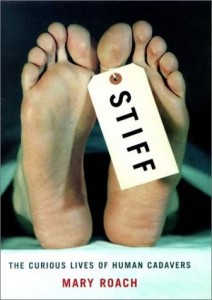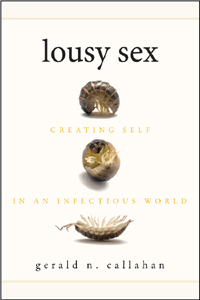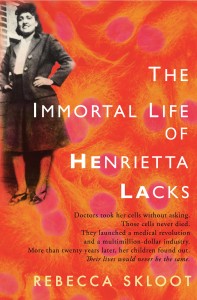by Samantha Tucker Iacovetto, Colorado Review Editorial Assistant
As a creative nonfiction writer, I am constantly searching for new ways to write about realities, both my own, and others. Whether I am writing literary journalism, memoir, or personal essay—or reading all that the genre entails here at Colorado Review—I find the key to rich nonfiction is in identifying patterns, or in making connections and parallels between things that may otherwise seem indifferent or even opposed to one another.
Colorado Review—I find the key to rich nonfiction is in identifying patterns, or in making connections and parallels between things that may otherwise seem indifferent or even opposed to one another.
Many writers are mining the seemingly contradictory through the innovative combination of science and CNF writing. Authors such as Mary Roach (Stiff, Spook) and Rebecca Skloot (The Immortal Life of Henrietta Lacks) have researched topics as varied as the use of human cadavers or the origins of the HeLa cell; both Roach and Skloot write about these topics in groundbreaking ways by using narrative and literary devices that expose readers to science in a truly accessible style.
For creative science writer Gerald N. Callahan, there is no opposition between the liberal arts and the sciences, no real gaps between his work in the lab, and the creative nonfiction he writes to explore it. Callahan, a professor who holds a joint appointment in the Department of Microbiology, Immunology, and Pathology and the Department of English at Colorado State University, insists that “science, at heart, is storytelling.”
In his new book, Lousy Sex: Creating Self in an Infectious World, Callahan addresses the role of the immune system in our understanding of what constitutes “self.” Callahan explains that ninety percent  of the body is made of bacteria—that “we are more non-self than self.” He unveils the scientific through the use of personal narratives and literary devices that both inform and are informed by his work as an immunologist and pathologist, all while furthering his idea that connections between art and science are necessary, if not innate. In his prologue, he writes,
of the body is made of bacteria—that “we are more non-self than self.” He unveils the scientific through the use of personal narratives and literary devices that both inform and are informed by his work as an immunologist and pathologist, all while furthering his idea that connections between art and science are necessary, if not innate. In his prologue, he writes,
Each of the tales that follows considers the art and science of what it means to be a human being in the same way a painter might explore how a weave of colors can change how we experience the sea or an old woman. Artists have changed forever the way I will think about the night sky. So have astronomers and physicists. But for me, the greatest insights about myself and my universe came when I stitched together Jocelyn Bell’s pulsars and Vincent van Gogh’s Starry Night, or when I interwove Josiah Willard Gibbs’s free energy, chemical thermodynamics, and Rainer Maria Rilke’s panther. In these spaces are stories about where we came from and who we are, about why we care and where we will end.
In Callahan’s collection, each essay is also linked by a few underlying questions: What is human self? How is it created—and what is it made of? Thematically, this search for self is not a new topic for Callahan. His earlier books, Faith, Madness, and Spontaneous Human Combustion: What Immunology Can Teach Us about Self-Perception and Between XX and XY: Intersexuality and the Myth of the Two Sexes, were also written from Callahan’s need to explore what it means to have a self. “Why are you—you?” he asks, and while easy answers may include our personalities, our thoughts, our basic genetics, Callahan proposes it’s much more complex—and biological—than that. Callahan believes “the essence of self…is an ability to determine what is me and what is not me.” In Lousy Sex, he examines that essence through narratives on Beethoven and syphilis, through stories on the sex lives of wood lice, through questions of immortality.
While Callahan’s subject matter is conceptually complex, his style and approach are entirely approachable and inviting. Online reviewers refer to his work as “poetic science,” indicative of his start as a creative writer; he began when his wife secretly signed him up for a poetry course, which eventually led him to a writing group. After his first book—a collection of essays and poems titled River Odyssey—Callahan found a need to combine his love of creative writing with his expertise in the sciences. For him, it was a natural and necessary combination. “As all writers do,” he says, “you start thinking about what you want to write about, and suddenly I realized I had all this stuff that I had learned that had really changed the way I thought about me, how I thought about you, how I thought about what it meant to be human.”
His dedication to learning, as both teacher and student, makes Callahan diligent in keeping his work from being “about ivory tower stuff.” He says that accessibility in science writing is not about “dumbing it down,” but instead, about translation—and pointing out accessible connections that scientists already make for themselves. “We scientists notice things in the world around us, things like disease; we do some research and then we create stories to try to explain the world around us,” Callahan says. “Like all storytelling that requires a metaphor—the war between us and bacteria, bodies divided into systems like machines—the better our metaphors, the better our science.”
And so Callahan’s poetic search is far from over. Though Lousy Sex was only just released, he is already working on two more books: one on how bacteria make us human, and another exploring how stories are “as powerful as genes and as infectious as viruses.” He is a writer/scientist—in no particular order—but perhaps more so, a student who needs to share all he has learned. Callahan explains, “My work as a writer and a student of literature has considerably heightened my awareness of metaphors and the way they pulse beneath the surface of all stories. Science, especially microbiology, has considerably heightened my sense of the power and the infectivity of stories.”
 For Callahan, story and science are essential to each other, to his work as both scientist and essayist, and to his—and our—understanding of the world. He, Roach, Skloot, and others are pioneering this creative nonfiction sub-genre that brings complex science to a wider audience. Callahan indicates that this sort of writing is on the rise, though he points once more to that need for strong connections. “The subjects are so fascinating, but the traditional language has been so intimidating,” he says. Writers who are driven to effectively bridge those gaps will certainly find the genre ready and waiting; Callahan thinks that for the able and willing “there has been and will be a greater demand for literary science writing.”
For Callahan, story and science are essential to each other, to his work as both scientist and essayist, and to his—and our—understanding of the world. He, Roach, Skloot, and others are pioneering this creative nonfiction sub-genre that brings complex science to a wider audience. Callahan indicates that this sort of writing is on the rise, though he points once more to that need for strong connections. “The subjects are so fascinating, but the traditional language has been so intimidating,” he says. Writers who are driven to effectively bridge those gaps will certainly find the genre ready and waiting; Callahan thinks that for the able and willing “there has been and will be a greater demand for literary science writing.”